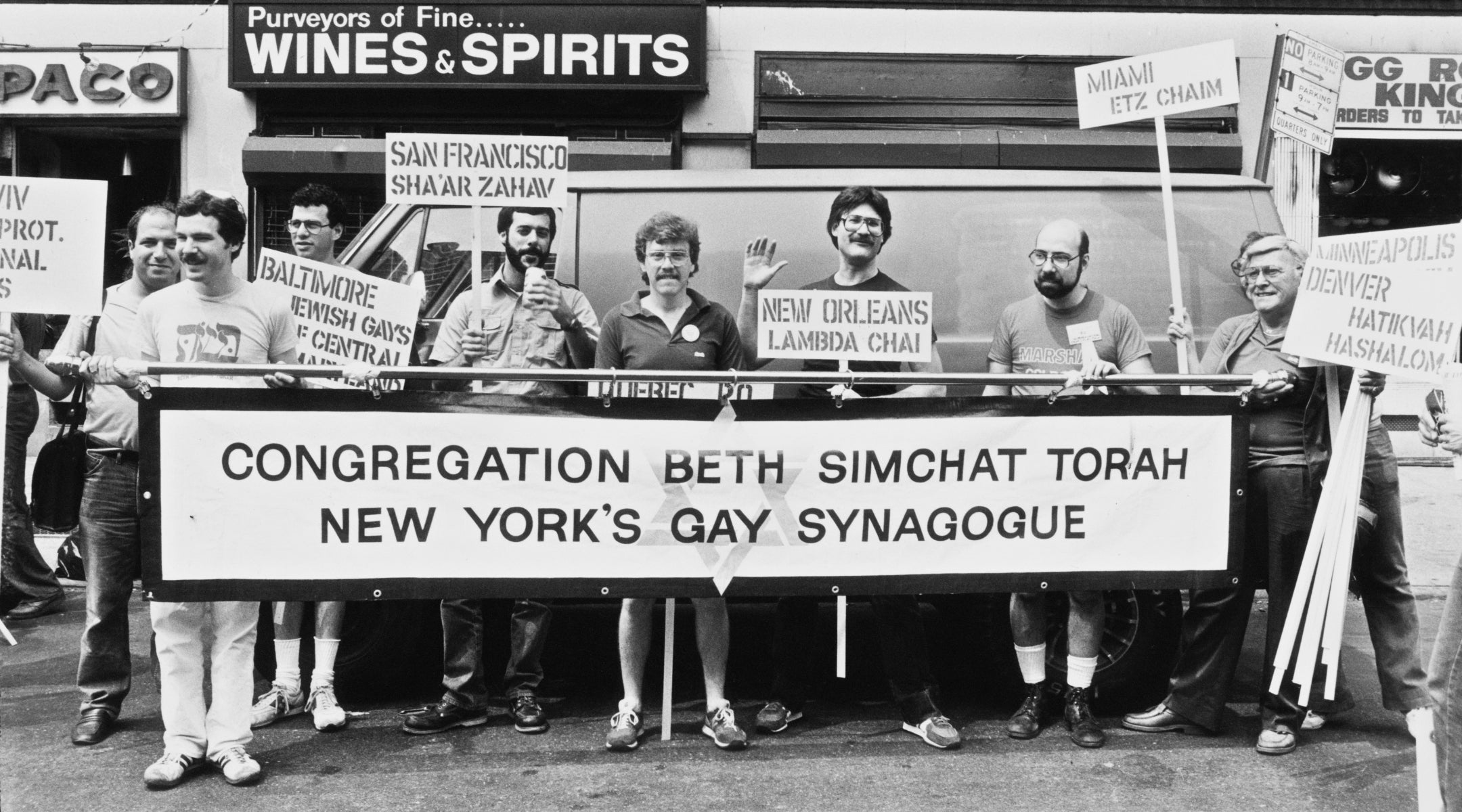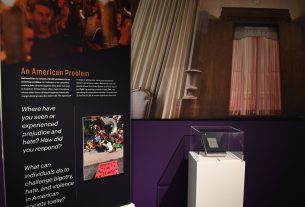With 371 years of Jewish history under its belt, New York City is chock full of iconic Jewish landmarks, which range from sites of national significance like Ellis Island to classic Jewish delis like Katz’s.
But New York’s Jewish history dovetails with that of other marginalized groups — including, of course, the LGBTQ community.
Over the decades, Jewish and queer culture have intersected in a variety of interesting and significant ways, from a Jewish anarchist who established one of the country’s first lesbian bars in the Greenwich Village in 1925 to a former bathhouse popular with the gay community that was run, for a time, by the famous Jewish songwriting brothers Ira and George Gershwin.
In honor of Pride Month, we’ve rounded up eight Manhattan sites of significance to the Jewish and queer communities, and the intersection between the two. Keep scrolling to learn more.
1. The Apollo Theater
223 West 42nd St
The Apollo Theater (left) on 42nd Street, shown here in 1943, was demolished in 1996, and on part of the site today is the Lyric Theater (right). (Michael Ochs Archives via Getty Images/Bruce Glikas, FilmMagic via Getty Images)
Not to be confused with the legendary Harlem theater of the same name, Broadway’s Apollo Theater on 42nd Street first opened in 1910 as the Bryant Theater. Designed for musical theater performances, the theater also showed popular films.
In 1923, Yiddish writer Sholem Asch’s “The God of Vengeance” — a story about a Jewish brothel owner and his daughter, who has an affair with a prostitute — opened in English. The play featured the first lesbian love scene on Broadway — which lead to the play’s cast and producer being charged with obscenity. (They were all found guilty, though the charges were reversed on appeal.)
The incident inspired Paula Vogel’s 2017 Broadway play “Indecent,” which unpacks the lives of the actors who were prosecuted for their appearance in Asch’s play. Vogel was nominated for a Tony Award for best play.
By the 1930s the Apollo was a burlesque theater and eventually, in the 1970s, like so many Times Square theaters, began showing X-rated films.
Though the Apollo Theater on 42nd Street was demolished in 1996, the facade of the building still remains on 42nd Street between 7th and 8th Avenues. On the site today are the Lyric Theater and the Times Square Theater, where parts of the interiors are inspired by or literally taken from the old Apollo Theater.
2. Congregation Beit Simchat Torah
130 West 30th St.

Congregation Beit Simchat Torah acquired a permanent space in a neo-Assyrian-style building in Midtown Manhattan in 2011. (Getty Images)
Congregation Beit Simchat Torah is known for being the world’s largest LGBTQ+ synagogue, and the first such synagogue on the East Coast.
CBST, as it is known colloquially, was created in the way that many groups were in the 1970s — through an ad placed in the “Village Voice.” Their first prayer service took place in 1973 at the Church of the Holy Apostles in Chelsea; by the following year, hundreds of congregants were in attendance for High Holiday services.
In 1992, CBST hired its first full-time spiritual leader, Rabbi Sharon Kleinbaum, who retired from her position in the spring of 2024. After meeting at the Chelsea church and, later, Westbeth Artists’ Housing, the congregation moved into its permanent home in 2011 at 130 West 30th St. — two condominiums with neo-Assyrian architectural motifs — after a 16-year search.
Today, the synagogue is headed by Rabbi Jason Klein and Associate Rabbi Yael Werber. For Pride Month, the congregation is hosting a series of events celebrating the LGBTQ+ community, like a “Jew York Pride” bagel brunch before the 2025 New York Pride Parade on June 29.
3. The Continental Baths at The Ansonia
230 West 74th St.
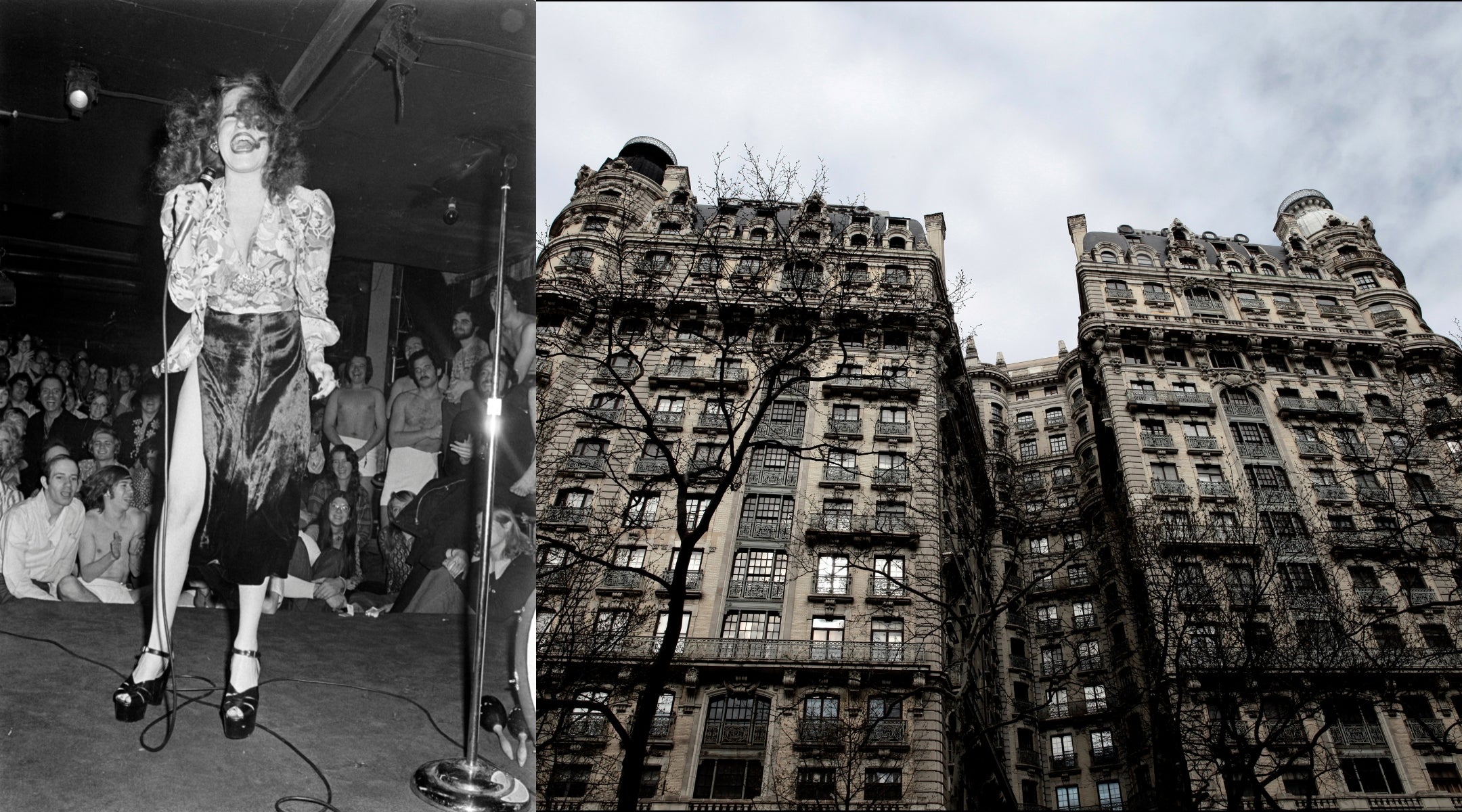
Singer, comedian and actress Bette Midler rose to prominence through performances at the Continental Baths, a popular gay hangout, at the Upper West Side’s Ansonia Hotel. (Pierre Venant via WWD, Penske Media/Oliver Morris via Getty Images)
It may not look like it from the outside, but this luxury Upper West Side Beaux Arts condominium, built between 1899 and 1903, was once home to the Continental Bathhouse — a popular gay hangout and music venue in the 1960s and 1970s.
Operated by Steve Ostrow, a former cantor and aspiring opera singer who turned the basement of the Ansonia into a disco and sex club, the Continental was also where Jewish singer, actress and comedian Bette Midler got her start. (Midler later recorded an album titled “Bathhouse Betty” in 1998.)
Jewish singer Barry Manilow, who produced Midler’s first album, had also performed at the Continental Bathhouse, as did anti-comedian-slash-performer Andy Kaufman.
As a bonus, the Ansonia also boasts a host of famous former residents, many of whom are Jewish, including actor Richard Dreyfuss, impresario Sol Hurok, composer Gustav Mahler and actress Sarah Bernhardt. Should you wish to have this upscale address as your very own, there are currently several units in the building on the market, starting from a studio priced at $749,000.
4. The Christopher Street Park Gay Liberation Monument
38-64 Christopher St.

The Christopher Street Park Gay Liberation Monument is the first national monument to gay rights in the United States. (Beata Zawrzel, NurPhoto via Getty Images)
Directly opposite the Stonewall Inn — the gay bar at 53 Christopher St. in the West Village where, in 1969, a police raid ignited a series of riots that launched the gay rights movement — are a pair of life-size sculptures cast in bronze and painted white: a gay couple and a lesbian couple.
These sculptures are known as the Gay Liberation Monument. Both the sculptures and the small, triangular green space that surrounds them, Christopher Street Park, are a part of the Stonewall National Monument — the first federal monument to gay rights in the United States
Created in 1980 by Jewish artist George Segal, the Gay Liberation Monument was installed in the park in 1992, following displays of the castings at Stanford University and in Madison, Wisconsin. The installation at Stanford was vandalized with a hammer, and removed from public display.
Ahead of his commission for the piece, some critics thought that a gay artist should create the monument — and Segal agreed. In 1979, Segal told The New York Times he was hesitant to take on the project, “since I’m an unregenerate heterosexual, and my first reaction was that a gay artist should do it.”
“But,” he added, “I’ve lived in the art world for many years, and I’m extremely sympathetic to the problems that gay people have. They are human beings first, I couldn’t refuse to do it.”
Today, the park and its sculptures are a popular gathering place for tourists and locals alike.
5. Eve Adams’ Tea Room
129 MacDougal St.
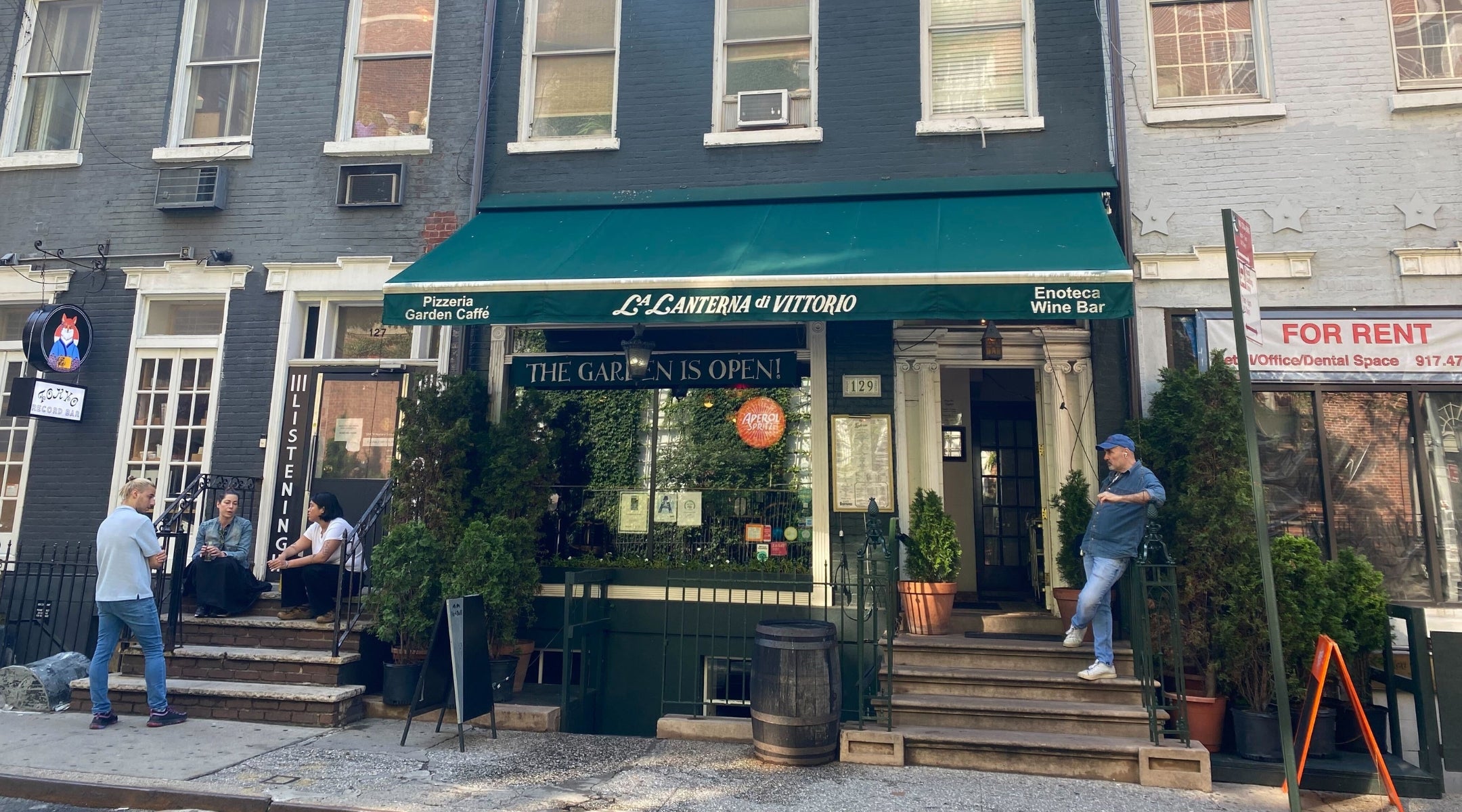
What was once Eve Adams’ tearoom, a lesbian tearoom and nightclub, is today an Italian restaurant that pays tribute to the writer and business owner on its menu. (Lily Lester)
Writer and activist Eve Adams was born Chawa Złoczower in Poland in 1891; she moved to New York when she was 20 years old. Here, in 1925, Adams — who was active in the anarchist movement and known for wearing men’s clothing — opened Eve Adams’ Tearoom (sometimes referred to as “Eve’s Hangout”), a lesbian-friendly literary tearoom and nightclub in Greenwich Village.
Adams is also the author of “Lesbian Love,” a collection of short stories and illustrations about roughly a dozen women’s same-sex relationships. At the time, “books like Adams’s were considered indecent and often burned,” according to The New York Times.
The tearoom was raided by police in 1926 — possibly for violating Prohibition laws or, more likely, due to a personal vendetta, per Atlas Obscura. Adams was charged with obscenity and disorderly conduct, and was sent to a New York “workhouse” for six months before being deported back to Poland.
Adams moved to Paris around 1930 and began a relationship with another Jewish woman, cabaret performer Hella Olstein Soldner, and the couple lived together even after Soldner married a man. The women were arrested in 1943 while in Nice, and deported to Auschwitz. Only 31 people survived that cattle car ride to Auschwitz, and neither woman’s name was on the list of survivors.
Today, the location of Eve’s Hangout is an Italian bistro with a patio garden, and two menu items — a cocktail and a tea — are named after Adams.
The owners of La Lanterna, Marisa Antonini, her son Vittorio, and grandson Vittorio, also acknowledge the site’s significance in LGBTQ+ history with a note on their website.
6. The Jorge Socárras Residence
508 East 5th St.

The ‘Silence = Death’ imagery, seen here in a 1987 protest, was developed at the residence of Jorge Socárras. (Rita Barros via Getty Images)
At the height of the AIDS epidemic in 1985, a political collective of six gay men — half of whom were Jewish — met in the East Village apartment of musician Jorge Socárras. There, they were inspired to create a guerrilla poster campaign to raise awareness about the AIDS crisis.
Several months into brainstorming their design — and particularly horrified by a 1986 op-ed in The New York Times that called to tattoo all HIV-positive people — the group (Socárras, Avram Finkelstein, Chris Lione, Charles Kreloff, Oliver Johnston and Brian Howard) was inspired to create an image that would call attention to the urgent need for government funds and medical care to address the AIDS crisis.
They settled on the imagery of a pink triangle — a motif drawn from the Nazi persecution of gay people, who forcefully put pink triangle patches on their prisoner camp uniforms — alongside the slogan “Silence = Death.” According to W Magazine, the group intentionally chose “advertisement-like language” for its campaign because, as artist Finkelstein said at the time, “advertisement, in my estimation, has become the folk language of capitalism.”
By the time the poster went to print, the collective realized the pink triangle was upside down, but they kept the design. Today, the pink triangle remains a common, if controversial, symbol of gay pride.
7. The Lafayette Baths
403-405 Lafayette St.
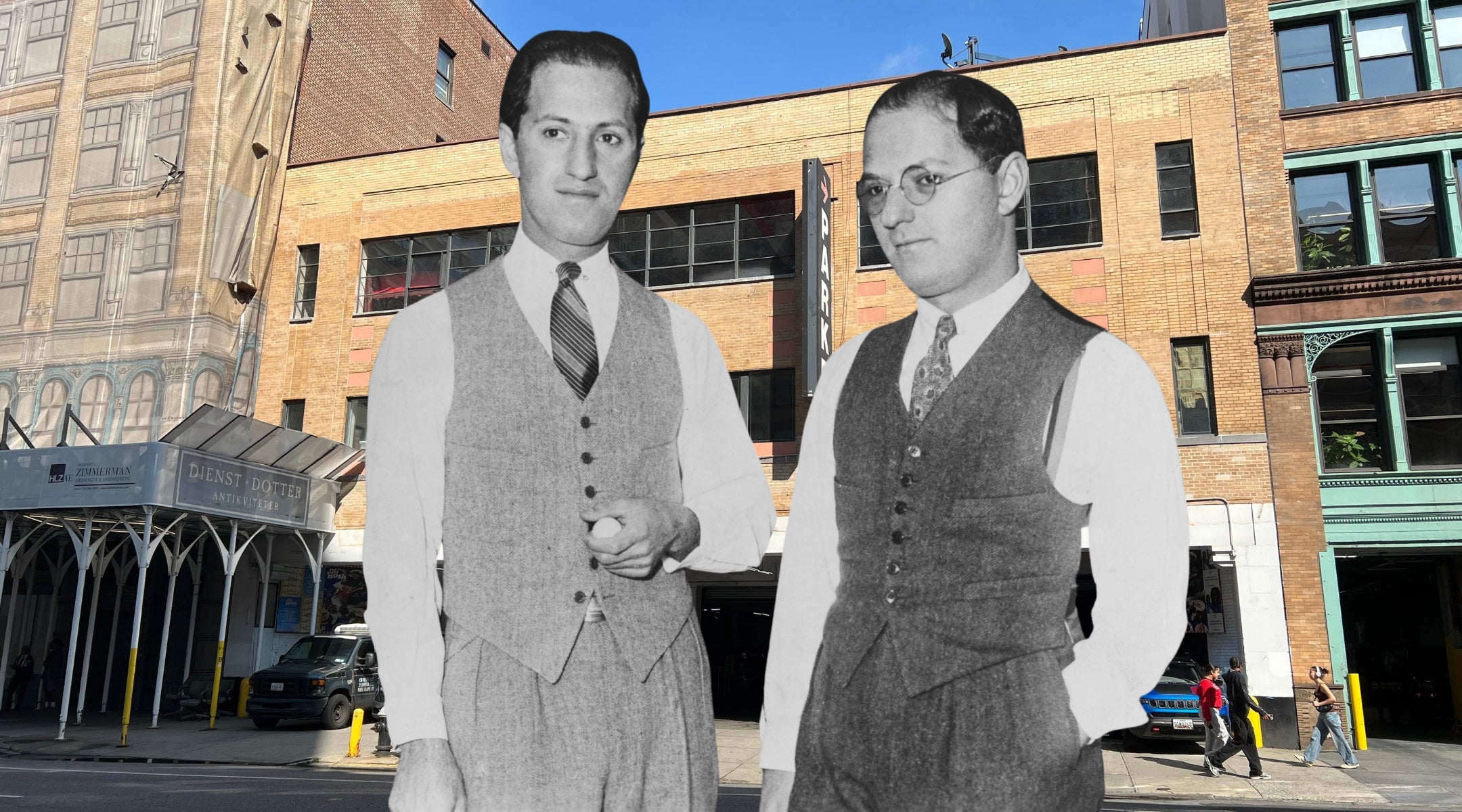
Songwriter brothers George (left) and Ira (right) Gershwin managed a popular gay bathhouse on Lafayette Street, now a Hertz car rental, before either of them became famous songwriters. (Hackett Archive Photos via Getty Images/Lily Lester.)
Before they became famous songwriters, Jewish brothers George and Ira Gershwin worked at their family business — a bathhouse on Lafayette Street, which was also a popular gay hangout in the 1910s.
Their father, Morris Gershwin, owned two Turkish baths — the St. Nicholas Baths uptown, and the Lafayette Baths (403-405 Lafayette St.), downtown. Both sons, (George, 18, and Ira, 20) took over management of the bath following a 1916 police raid, after which the manager died by suicide.
The Gershwin brothers, of course, are known for their contributions to the Great American Songbook, including “Of Thee I Sing,” the first musical to win a Pulitzer Prize for Drama, and the opera “Porgy and Bess.”
Today, the location is a Hertz car rental.
8. The Osborne Apartments
205 West 57th St.
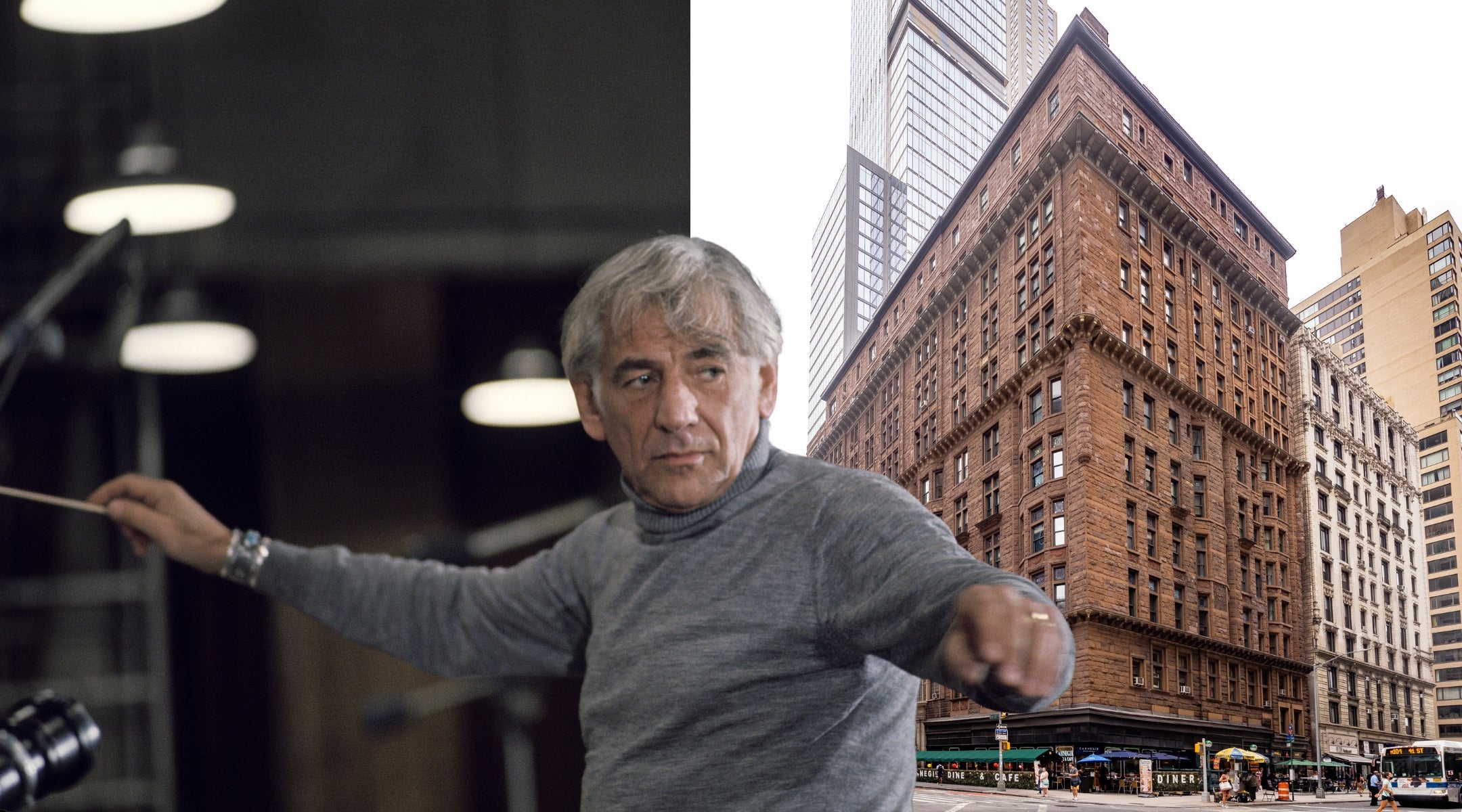
Composer Leonard Bernstein wrote some of his most important musical works while living at the Osborne Apartments on 57th Street. (Santi Visalli via Getty Images/Wikimedia Commons.)
While living at the Osborne Apartments in the 1950s, Jewish conductor and composer Leonard Bernstein wrote the scores for multiple Broadway musicals, including “Candide,” and “West Side Story,” as well as the film “On the Waterfront.”
Known as “the Maestro,” Bernstein’s sexuality was kept hidden from the public. Bernstein married Felicia Montealegre in 1951, and the couple had three children together. (Their relationship is dramatized in the 2024 film “Maestro.”) But throughout their marriage, and in the years after, he continued having relationships with men.
As it happens, Bernstein isn’t the only iconic queer Jewish resident of the Osborne Apartments. Famously curmudgeonly writer Fran Lebowitz, lived in the building from 1984 until about 2010; she told Architectural Digest “it’s one of the most beautiful buildings in New York.”
The Osborne remains a residential building, and its location on 57th Street places it on what is now known as “Billionaires’ Row.”
Jewish stories matter, and so does your support.

